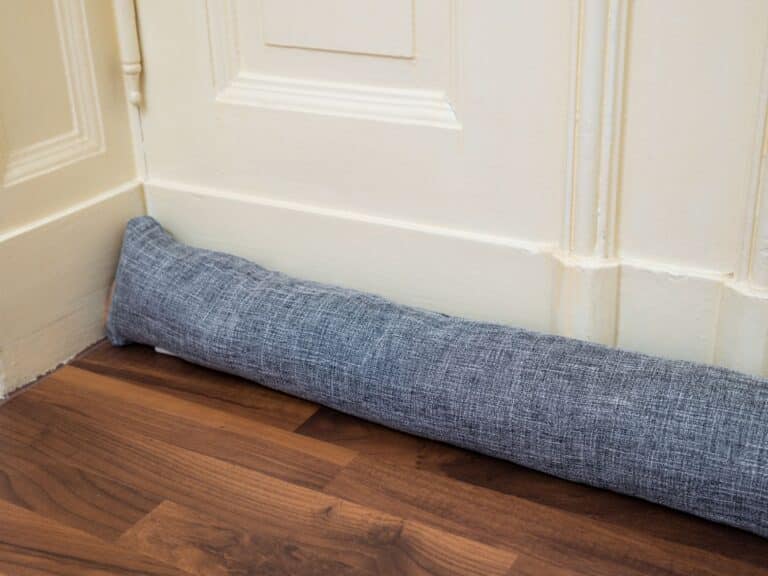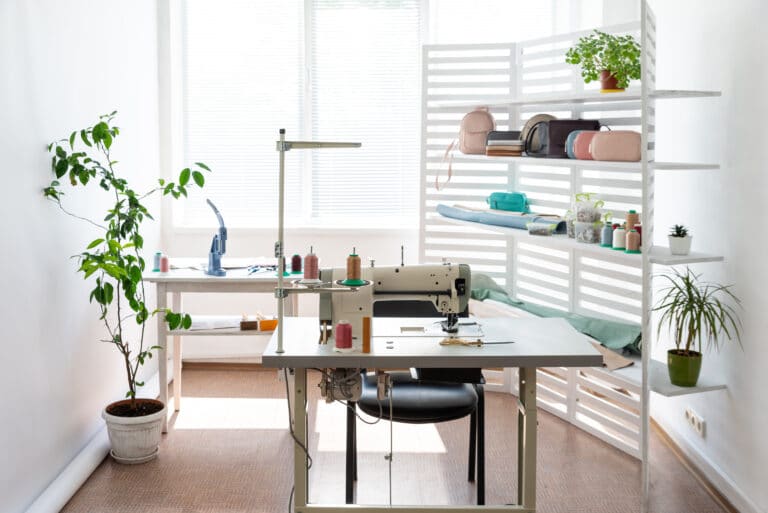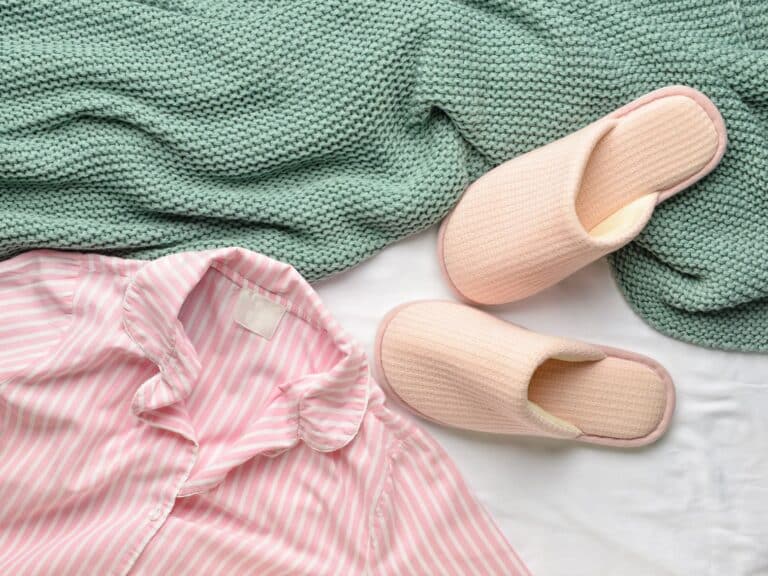How To Sew A Buttonhole By Hand (The Easy Way!)
Some of the links below are affiliate links. As an Amazon Associate I earn from qualifying purchases. This means that, at zero cost to you, I will earn an affiliate commission if you click through the link and finalize a purchase.
Sewing machines make it fast and easy to create buttonholes, but what do you do if you don’t have one? Sewing a buttonhole by hand is the next best option unless you don’t mind paying the local tailor a visit. But how do you go about it?
Adding handmade buttonholes to a sewing project doesn’t have to be hard work and can be something quite simple and easy to do.
Here’s how to sew a buttonhole by hand:
- Mark the buttonhole’s position on the fabric.
- Determine the buttonhole’s size.
- Cut the buttonhole.
- Make tacking stitches around the buttonhole.
- Make buttonhole stitches around the buttonhole.
- Sew on your button.
In the rest of this article, I’ll cover the above steps in greater detail to provide you with a comprehensive step-by-step guide for hand-sewn buttonholes.
There may be some different types of buttonholes you might want to achieve for using different styles and sizes of buttons but most use the same technique by hand and so this tutorial is straightforward and easy to adapt depending on the button.
Creating
Step 1 – Mark the Buttonhole’s Position on the Fabric
The first step of sewing on a buttonhole by hand is the most important because it determines its location. Once you’ve cut your buttonhole, there’s no going back, so it’s essential to find the best location.
Here are some considerations to help you find the perfect buttonhole location:
- Do you need a vertical or horizontal buttonhole?
- Will the buttonhole location allow the fabric to close effectively, and not too loosely?
- Will the buttonhole close the fabric too tightly?
- How will the finished buttonhole look on the fabric?
After determining your buttonhole’s place, mark it on the fabric with a light pencil, chalk, or dressmaker’s pen.
Step 2 – Determine the Buttonhole’s Size
The size of your buttonhole should be wide enough to accommodate the broadest part of your button. Unfortunately, it can be challenging to use a ruler or measuring tape to take an accurate measurement of your button.
An effortless way of measuring the correct buttonhole size is to take a piece of ribbon or yarn and wrap it tightly around the broadest part of your button.
Secure it with a pin, remove the button, and place the ribbon or yarn on your fabric. Then, carefully mark the buttonhole size with a pencil or dressmaker’s pen on the fabric.
Step 3 – Cut the Buttonhole
Now you can cut your buttonhole. The Clover Buttonhole Cutter is the best tool for this job. It allows you to make small cuts on fabric and makes the creation of a buttonhole easy.
If you have a pair of dressmaker scissors, you can use them for this task. Otherwise, any pair of sharp-nosed scissors would be perfect.
Instead of stabbing the fabric, creating a hole, and causing the fabric to fray, fold the fabric over your marked-out buttonhole, and cut the folded-over material carefully over the mark.
Alternatively, you can a seam ripper to create the whole as this can be done at a small area and slow rate to ensure a non-fraying edge.
Step 4 – Make Tacking Stitches Around the Buttonhole
After cutting the buttonhole opening, you need to make small, horizontal tacking stitches or a running stitch around it. When you start making the buttonhole stitches, the tacking stitches guide you so that your stitches are uniform and neat.
Since your buttonhole stitches will be roughly 2mm (0.08 inches) long, make tacking stitches 2mm (0.08 inches) above, below, and on either side of the slit you have cut in the fabric.
If your buttonhole is very large, or you plan on using a heavy button, consider increasing your buttonhole stitches’ length.
Make sure to make your tacking stitches are in a straight line down either side or at either length of the buttonhole to ensure it stays strong.
You can use any colour buttonhole thread for tacking, as you’ll take them out once your buttonhole is complete.
Step 5 – Make Buttonhole Stitches Around the Buttonhole
Now you’re ready to sew and reinforce your handmade buttonholes. To do this, you’ll need to thread a needle with a length of thread twice the length of your buttonhole, with some extra just in case.
It’s best to choose a thread colour in the same colour and shade as the right side fabric so that the buttonhole stitches can blend in.
One of the best stitches to use is the blanket stitch or overcast stitch as this encases the raw edges of the buttonhole and creates a neat fabric edge.
There are a few ways in which you can create perfectly bound buttonholes by hand and this is by using the correct stitches and using the best materials. One of these materials is wax on your thread to create a stronger hold on your thread, it helps create a protective coating making the thread last longer.
To make a stronger buttonhole you can also use doubled thread to make it quicker, stronger and longer lasting, especially for garments that will have a lot of use.
When it comes to the ends of the buttonhole you can treat them as you have done the other edges but try not to create too much bulk as you don’t want to stretch the fabric and make a gaping hole for your button to sit in.
Hand sewing the buttonhole means you can take more time to be precise and create nice buttonholes on a handmade garment.
Below is a useful guide to making a hand-worked buttonhole stitch:
- After threading the needle, tie a knot at the end, and feed it through one of the top corners of your buttonhole.
- Pierce the needle through the buttonhole so that it’s underneath the fabric, and then feed it back up so that it’s level with your tacking stitches.
- Repeat the same stitch but make a loop of thread under your needle, and then feed it through again.
- Continue making looped-thread stitches around your buttonhole until it’s completely surrounded.
- Gently remove the tacking stitches with a thread unpicker.
- Sew on Your Button
Sewing on your button is the easiest step and should take you less than five minutes.
Here’s how to sew on a button by hand:
- Find the correct location for the button, and thread a needle with the same colour thread as your button.
- Make five preliminary stitches on the fabric.
- Place the button through the needle and keep it secured at the correct location.
- Pull the needle through the fabric and the button’s holes and make five stitches to secure it in place.
- Make two final stitches on the fabric to keep the button securely in place and to prevent the thread from unraveling.



